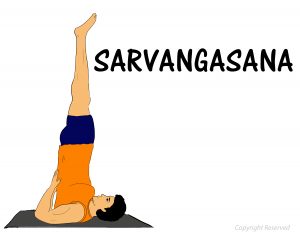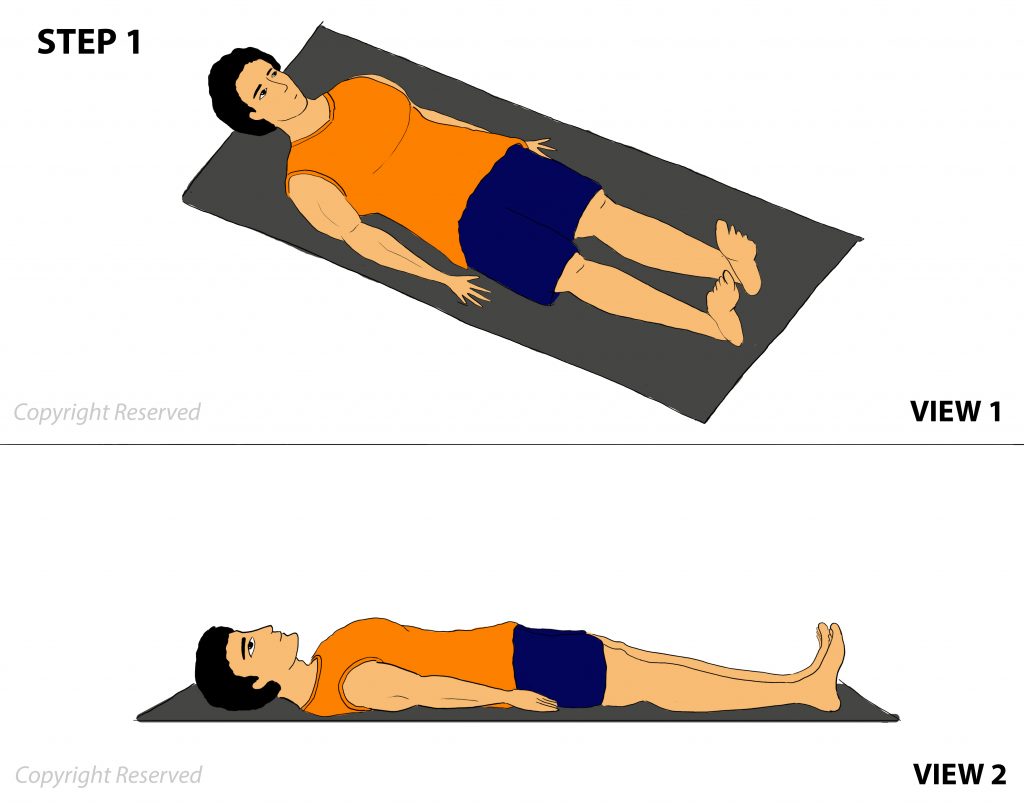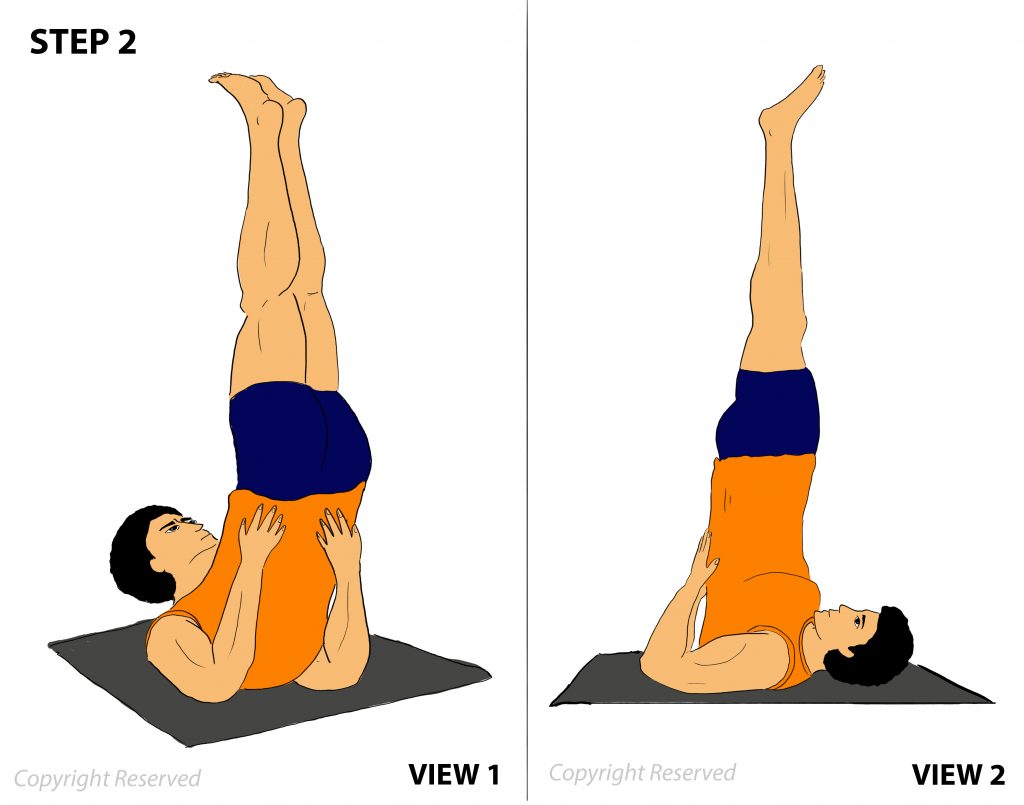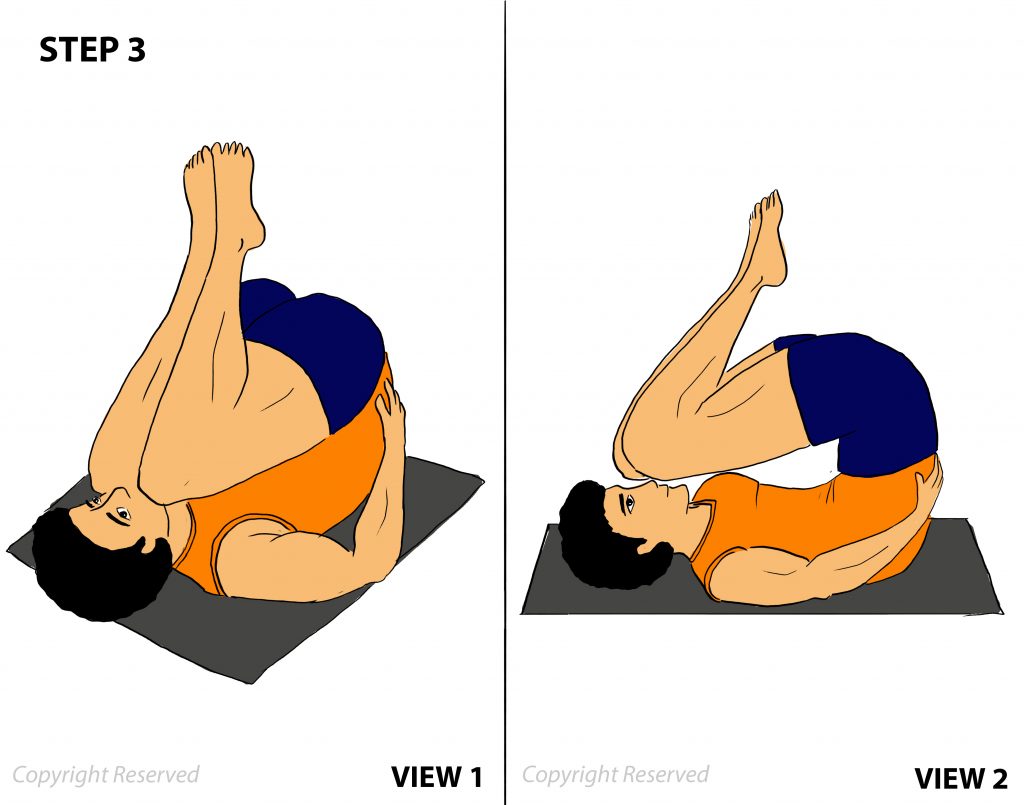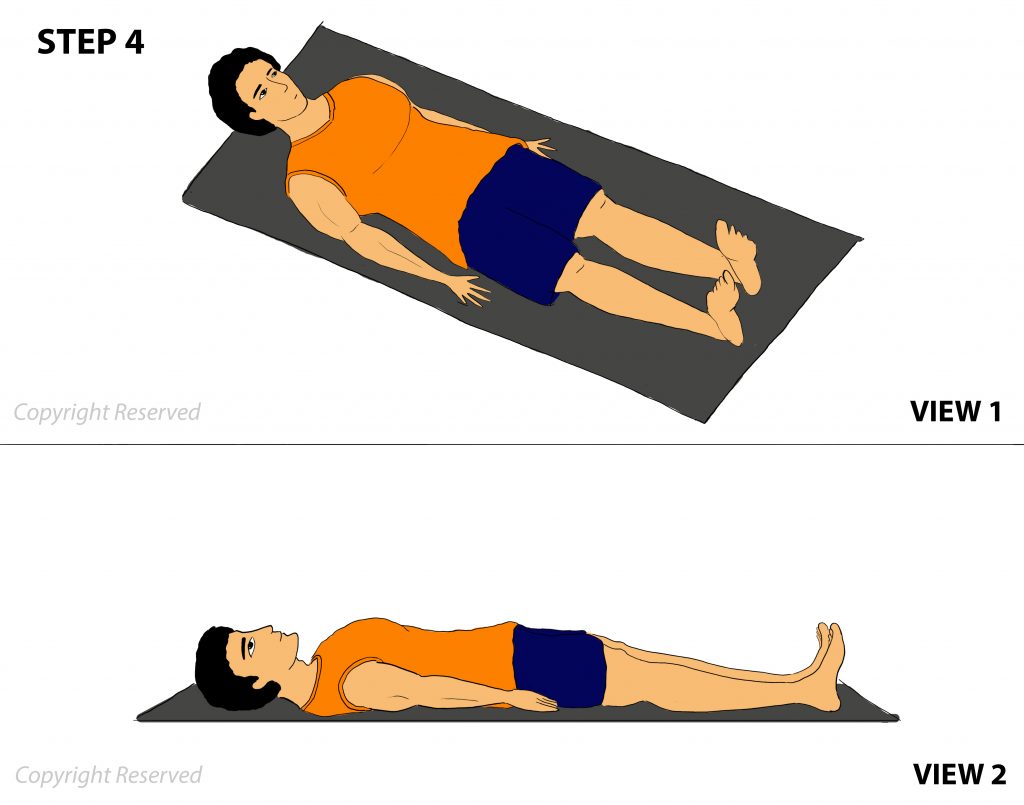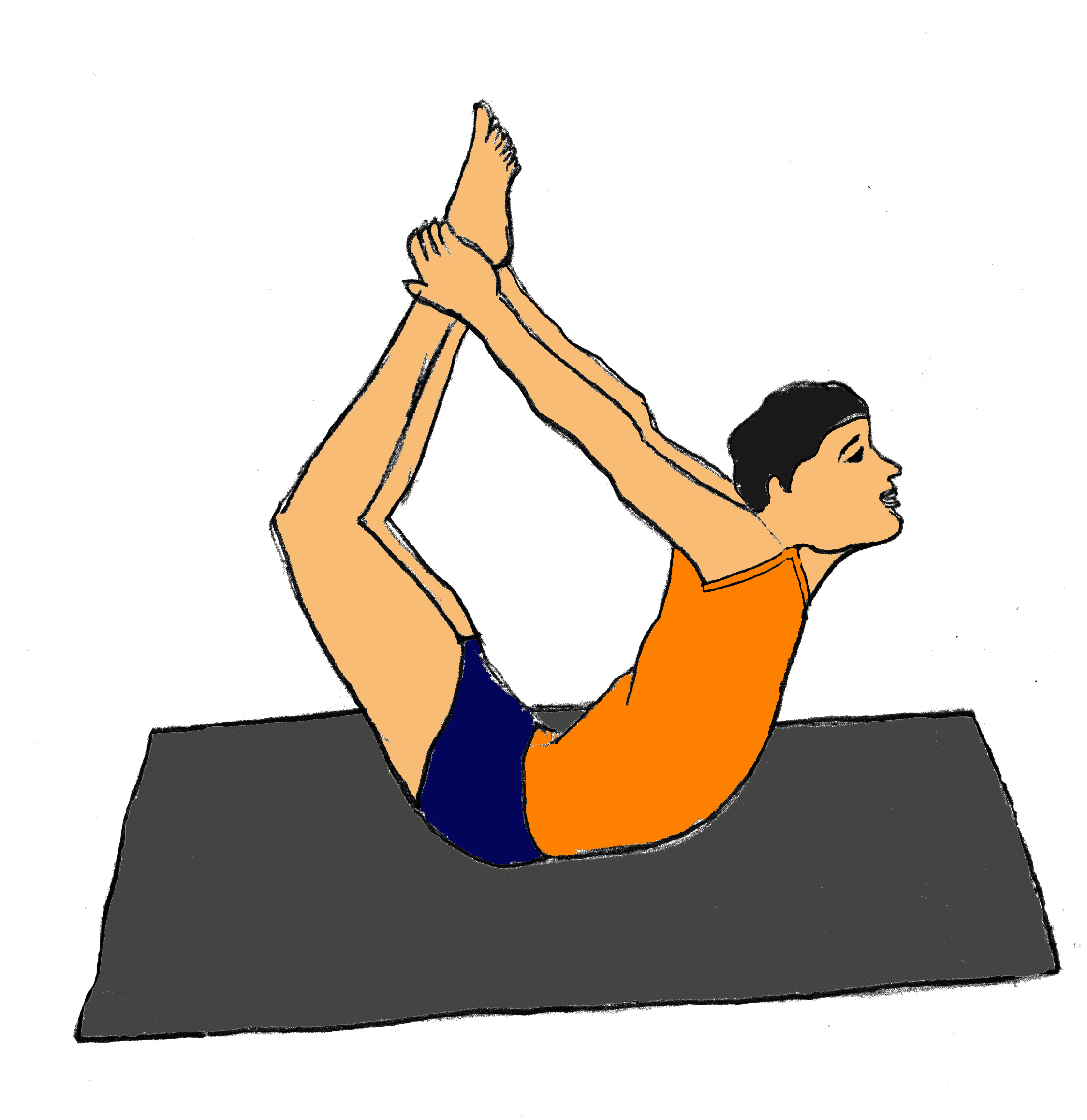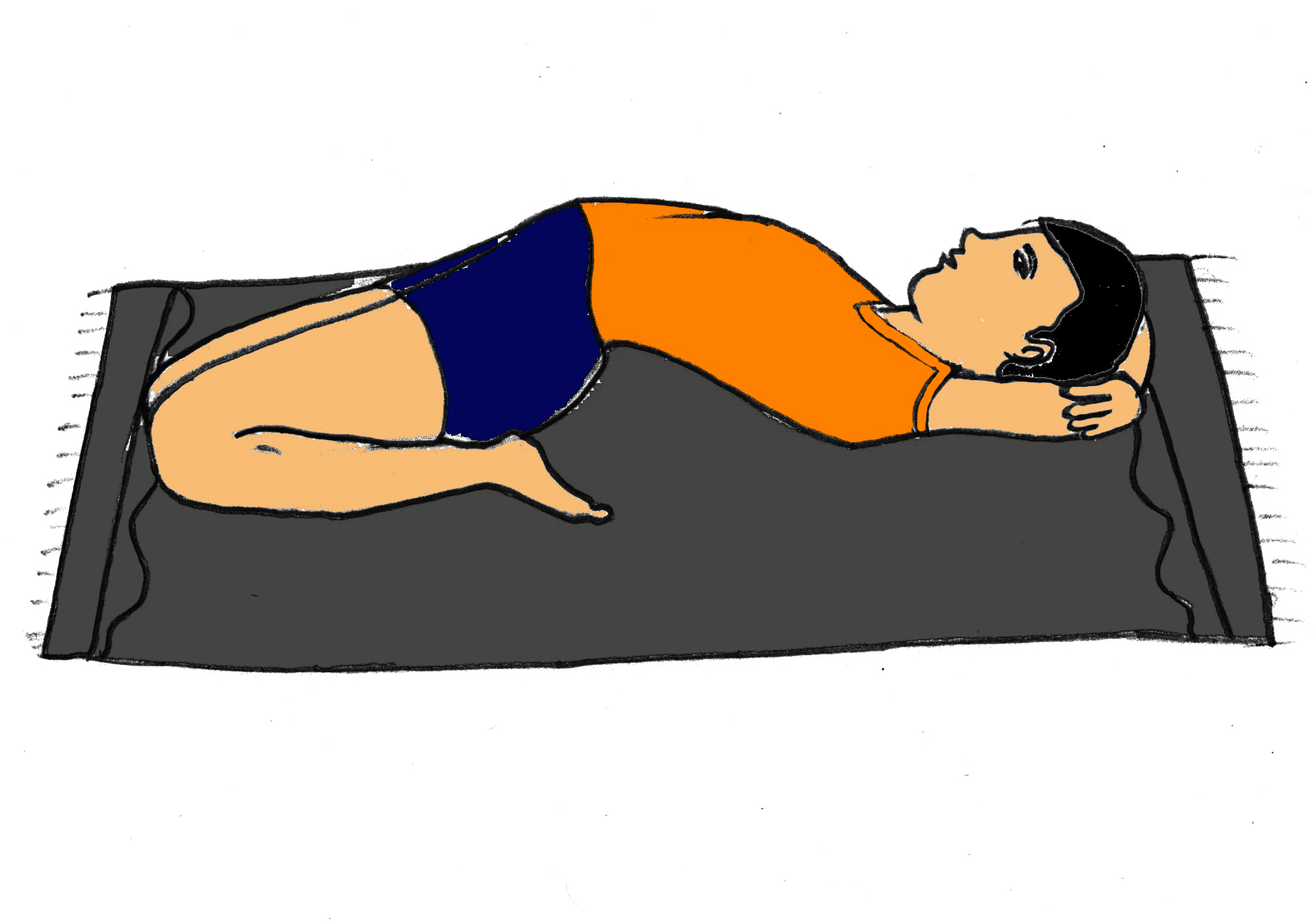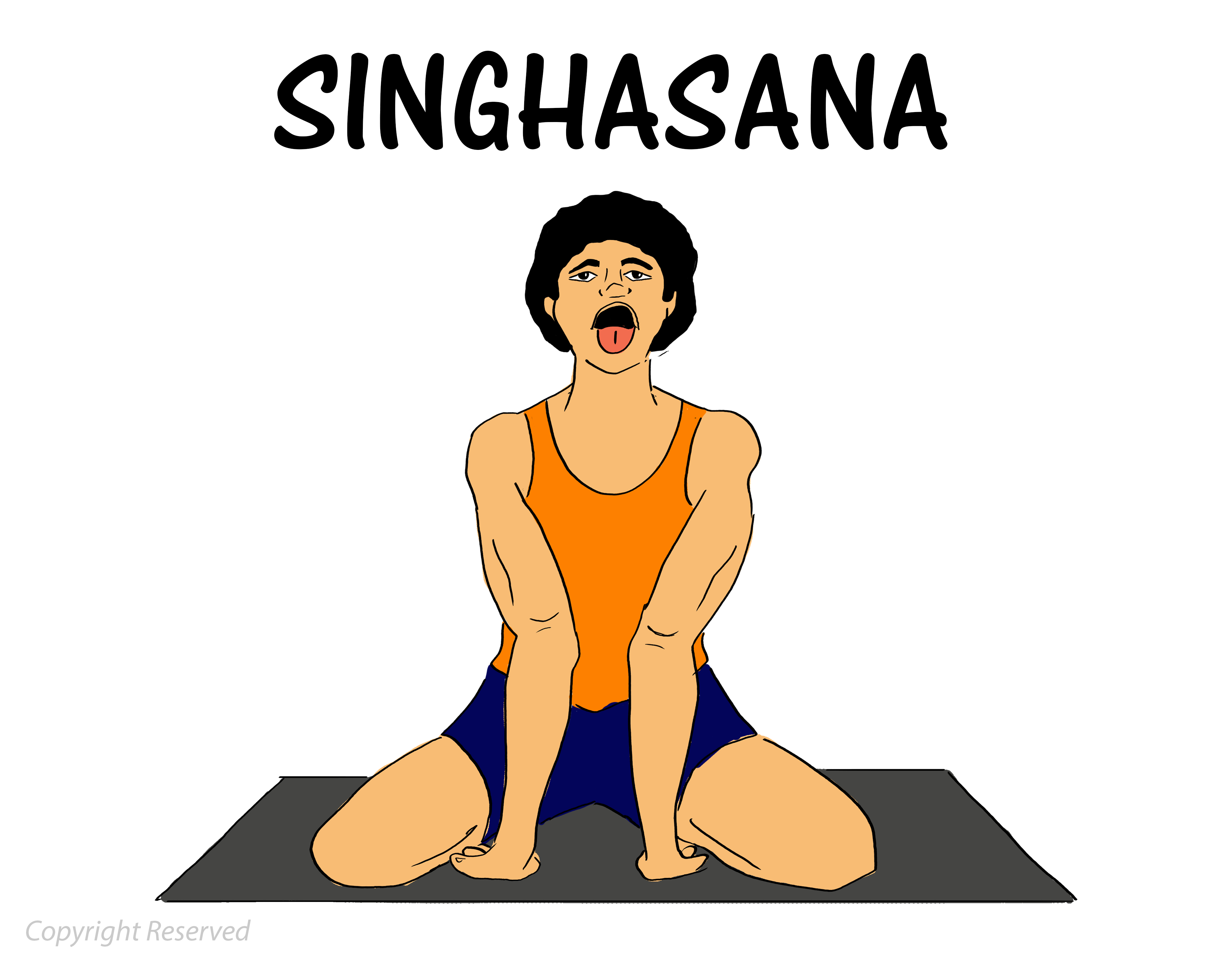Sarvangasana
Sarvangasana is widely hailed as the queen or mother of all types of asanas. Also referred to as Shoulder Stand pose, it is a form of hatha yoga and improves the functioning of numerous parts of the body. It is a very powerful form of asana that can boost your health and fitness. It is a type of inversion asana that can form the basis of more complex inversion asanas that you can progress to at a later stage.
Steps of Sarvangasana
These are steps of Sarvangasana pose that you should follow while doing this asana.
- Lie flat on your back having your hands by the side.
- Lift your legs, back and buttocks with a single movement high above your shoulders. Then support your back properly with your hands.
-
Make sure that you keep straightening your legs and spine gently by pressing your elbows down towards the floor as you keep your hands to the back. You need to support your body weight with your upper arms and shoulders instead of your neck and head.
-
While you do so, pay attention to the neck and do not press your neck on the floor. Keep your neck strong and accompany it with tightening of the neck muscles to some extent. Then press the sternum toward your chin. In case you experience any strain around the neck, instantly come out of this posture.
- Stay in this posture for about 30 to 60 seconds as you keep breathing deeply.
-
When you want to end this posture, gently lower your knees to the forehead. Make sure that you bring the hands to the floor with palms facing down.
-
Slowly bring the spine down without lifting your head, vertebra by vertebra to the floor. Then lower your legs to the surface of the floor.
- Finally, relax for about 60 seconds.
Preparatory Poses associated with Sarvangasana
There are the preparatory poses that you must do before performing Sarvangasana:
- Halasana
- Virasana
- Setu Bandha Sarvangasana
Tips for performing
As a beginner, you may find your elbows suddenly sliding apart when you are looking to perform this asana. This can cause your upper arms to effectively roll inwards. Such a move can lead your torso to immediately sink on the upper back and you can collapse from the pose. It can also cause serious injury to your neck and leading to straining. Therefore it is useful that you use a blanket for supporting your shoulders. It is not just important that you learn all the Sarvangasana techniques but also performs it in the supervision of a yoga teacher.
The science
Sarvangasana is regarded as one of the oldest and most therapeutic asanas. The ancient yoga texts suggest that it can be used for addressing the needs of every chakra and organ in the body. The asana helps to cure diseases as well as enhances the working of the organ, gland or the system. The asana requires great focus and helps to enhance mental concentration.
Benefits of Sarvangasana
-
The asana helps to improve blood circulation of the body. Stagnant blood from lower regions of the body such as the abdomen and legs are drained into the heart which helps to supply fresh blood to all these parts as well as the remaining of the circulatory system. Effective blood supply to the brain, ears, eyes, throat, and nose is also improved which enhances their functioning. Circulation is also improved in the abdominal and pelvic areas which help to remove ailments of these regions.
-
Jalandhar Bandha associated with Sarvangasana helps to improve functioning of pituitary, thyroid and parathyroid glands by stimulating increase blood flow and oxygen. Every endocrine gland is regulated by functioning of the pituitary gland which means that it is necessary to enhance the balance and functioning of endocrine system. It leads to improved functioning of other gland systems which ensures reduction of mental and emotional stress, This makes it the best yoga for thyroid problems.
-
With this asana, lung capacity can be highly increased since the diaphragm works against gravity through this posture. The diaphragm is the most important muscle associated with respiration and practicing this asana can resolve issues of asthma. Toxins present in respiratory system can get drained through enhancement of the respiratory system.
-
It helps in thorough detoxification of the whole body and offers the benefits of anti-aging effects and youthfulness.
- It prevents and cures the complications of varicose veins.
- The asana helps to normalize body weight by improving the functioning of thyroid.
-
Psychological disturbances and mental stress can be removed due to the improved blood flow to the head; this helps to tranquilize the mind. Increased blood flow is beneficial for all those who tend to suffer from painful headaches, even though the asana should never be practiced during the time of a headache.
-
The asana has a strong impact on the hormonal system, especially the thyroid which promotes balancing of digestive, circulatory, nervous and reproductive systems.
- It helps to balance parathyroid glands thus ensuring normal development and regeneration of the bones.
- Thymus gland can get stimulated through this asana that improves the functioning of the immune system.
-
With this asana, the nerves that pass through the neck are toned which helps to increase neck flexibility.
-
The asana releases normal gravitational pressure that generally affects the anus muscles thus helping with hemorrhoids.
-
Pranic flow gets harmonized which helps to increase energy and result in the positive effect through all body systems.
-
The digestive system can be greatly improved through increased blood circulation as well as drainage of the stagnant blood that is caused by this asana. This makes Sarvangasana an excellent yoga pose for blood circulation.
-
The asana can improve the reproductive system by sending fresh blood to the pelvic region. The stagnant blood gets flushed from organs which increase the efficiency of reproductive organs.
-
An additional benefit of Sarvangasana is that it has all benefits normally associated with Shirshasana and it is also easier and safer to perform.
- Sexual disorders can also be cured with this asana.
-
Sarvangasana strengthens uterine ligaments and improves the functioning of the uterus. It also improves the functioning of ovaries and helps to relieve menstrual disorders, leucorrhoea, frequent abortions and barrenness in women.
- Diseases that affect the heels are completely cured through this asana.
-
Conditions like intestinal disorders, liver disorders, diabetes, constipation, diarrhea, insomnia and varicose veins can be cured.
- It can rectify disorders of nose, throat and ears.
- Practicing Sarvangasana regularly helps to maintain perfect body weight.
-
It is a great yoga for hair. Common problems like hair loss as well as premature graying of one’s hair can be controlled or put to an end.
-
Skin issues, like wrinkles in the face, shrinking of skin, stiffness and aged look can be removed with this yoga for the skin. Sarvangasana helps to increase glowing of skin.
Precautions and contraindications associated with Sarvangasana
The following are the precautions and contraindications associated with Sarvangasana.
-
Sarvangasana should never be performed by individuals who are suffering from heart conditions, high blood pressure or brain diseases.
- It should also be avoided by pregnant and menstruating women.
-
People suffering from enlarged spleen, an enlarged thyroid, liver problems, slipped disc, cervical spondylitis, headache or weak blood vessels within the eyes should not practice Sarvangasana.
Practicing Sarvangasana can have a transformational effect on your body. So start doing this asana on a regular basis from today.
References
Click Here
Click Here
Click Here
Click Here
Click Here
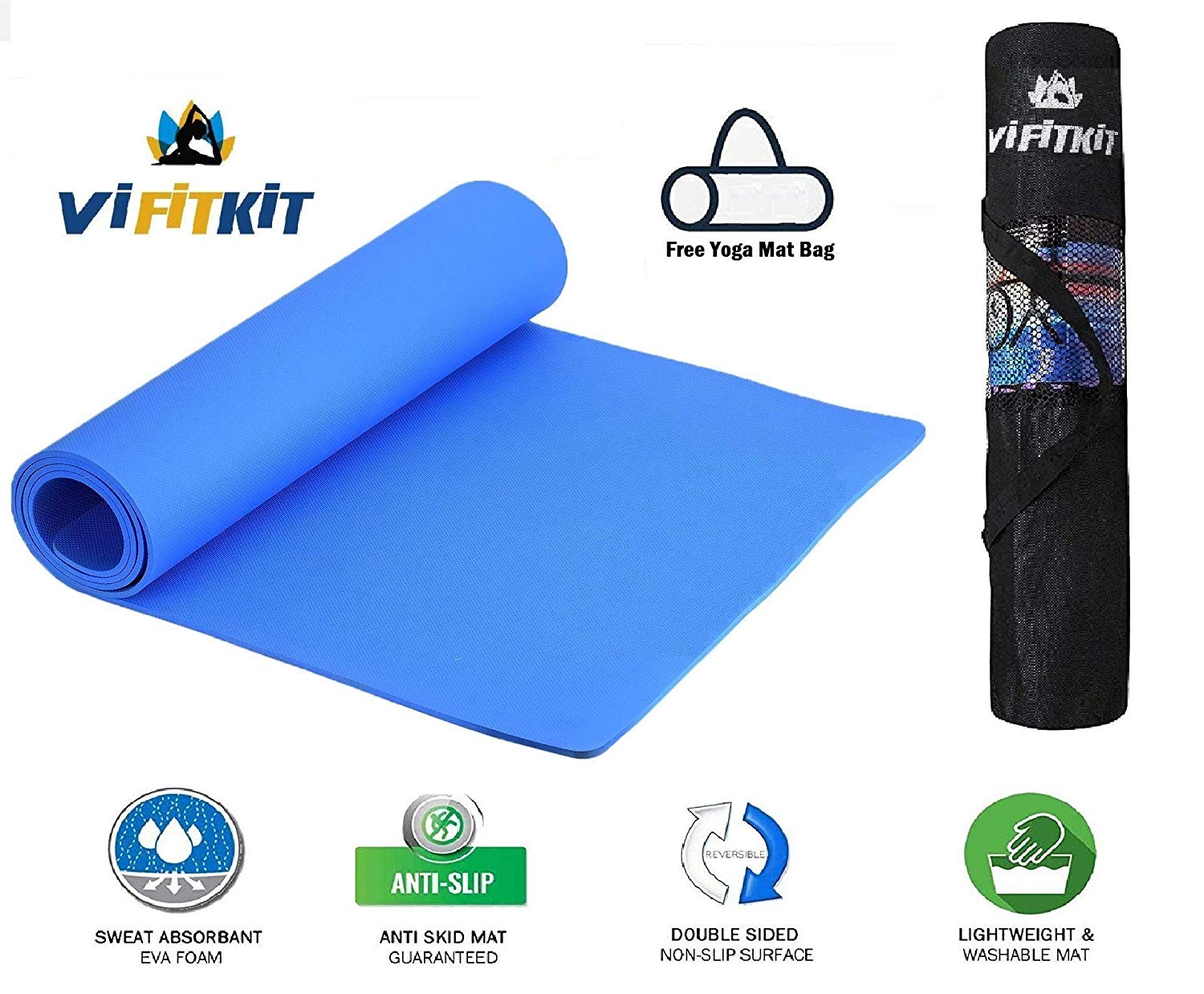
VI FITKIT Yoga Mat Anti Skid EVA Yoga mat with Bag for Gym Workout and Flooring Exercise Long Size Yoga Mat for Men and Women (Color - Blue)
Price: Rs 399.00 FREE Delivery. Details
About The Product
- With high density foam material, The thick ( 3 mm thick ) premium mat with comfort cushion spine, hips, knees and elbows on hard floors. This makes it a perfect size for both men & women.
- SWEAT RESISTANT AND WASHABLE YOGA MAT - Next time don’t stress when you sweat while doing yoga. The yoga mat is completely sweat resistant and has a Moisture resistant Technology which makes the mat easily washable with soap and water.
- This Yoga Mat is designed to give you the most comfortable yoga experience possible. The extra thick mat protects joints without compromising support or stability
- DURABLE & ECO FRIENDLY YOGA MAT - The EVA material is extremely durable and eco friendly. It lasts upto 5 times more than a regular plasticky mat! The material is biodegradable and free from PVC, silicon, latex and other toxic materials. We believe in creating quality and Eco friendly products for our customers!
- Care Tips: Do not place in washing machine or dryer, Please clean before and after using, clean regularly and keep it dry for healthy using.
